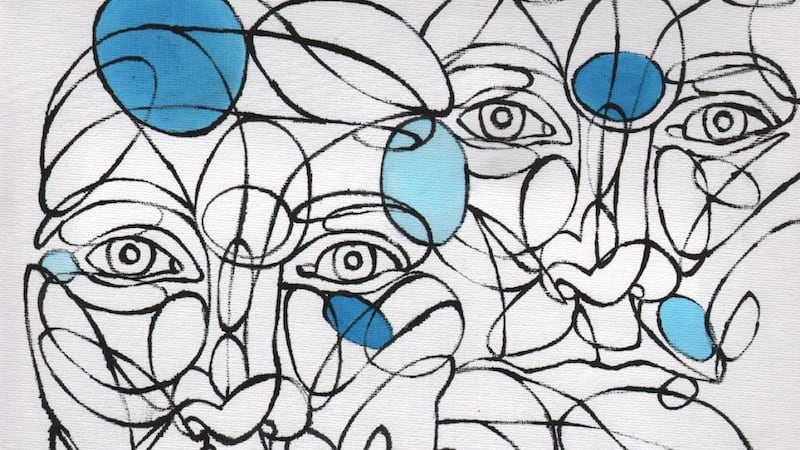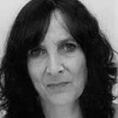It’s a cool, stylised watercolour. A long-legged girl in a yellow minidress sits on a white box and leans forward, dangling a wedge-heeled sandal from one hand. The other sandal waits nearby. It could be an advert for the Office shoe shop, or for Clarks. “Shoes come in a box . . .” runs the tagline. “People don’t.”
This lovely, clever illustration, by Debbie Chapman (with Ekaterina Tikhoniouk) graces the back page of Issue 3 of HeadSpace, a Dublin-based, not-for-profit magazine dedicated to creative work for and by those who live with mental illness.
HeadSpace is distributed free to 30 psychiatric hospitals, clinics and mental health support centres here and in the UK.

Each issue – the fourth is in production – features a mixture of prose, poetry, paintings, drawings and photographs. It’s the brainchild of the current editors, Naomi Elster and Lisa Burke, and another young woman, Orla Price, who co-edited the first issue but has since emigrated.
The magazine came about because members of the founding team had been in for a hospital stay, either for physical or mental illness, and found that the experience was a curious mixture of anxiety and boredom.
“It can be really stressful, and there’s often nothing much to read or to take your mind off things. So you can end up sitting there and thinking about how ill you are,” says Elster.
“Orla told a funny story about how she ended up diagnosing herself as having a whole load of illnesses, and had a load of unnecessary blood tests just because she had nothing to read except the information leaflets. So we had the idea that if you provided some reading material for people in hospital, it would make their lives a bit easier and less stressful.”
The group came together in February, 2013, finding each other through a mixture of friends and social media contacts. Burke had an interest in media and journalism and, like Price, had experienced mental illness and wanted to do something to help others in the same situation. Elster saw their request for submissions, had a story accepted, and then became involved in the fundraising campaign for the first issue.
A FundIt campaign failed but by that point the three had the bit between their teeth and were not put off.
“We just had a real direction; by that stage we knew exactly what we wanted to do – produce a magazine for people with mental illness and distribute it in psychiatric hospitals,” says Burke.
Goodwill towards the project That clarity of purpose helped, as did the goodwill of people towards the project. “Right from the start people were willing not just to buy raffle tickets but to talk to us about it and ask how they could help. And that helped give us the determination to keep going.”
They looked for submissions, mainly through online creative writing and arts groups, and were surprised by the enthusiastic response and by the high standard of the material. Many of the contributions to HeadSpace are technically accomplished and all have the raw honesty and immediacy that is the essence of art.
“It can be heartbreaking trying to choose, because the standard is very high, even of the ones we have rejected,” says Elster.
After eight months of hard work, between their fundraising, some pre-orders and some of their own money, the trio had enough to produce the first issue in 2013.
Given the quality of the magazine, it's no surprise that Rehab came on board and helped fund the second issue. Though she had a number of contributions in it, by this point Price had left for London,where she is now involved in a similar project called Anomalie. Elster and Burke co-edited issues two and three, which again were funded through a mixture of grant aid and their own fundraising raffles and events.
They usually print 400 copies and are currently raising money through crowdfunding website Indiegogo for issue four, which they hope will appear early next year. Burke will be the sole editor as Elster is leaving the project to concentrate on writing her PhD thesis on breast-cancer research at the Royal College of Surgeons in Ireland.
In the meantime, the pair have collaborated on a special publication with the Twilight project in St Patrick’s Hospital, which offers service users a range of classes and activities in the evenings and at weekends.
They facilitated a series of eight writing and art workshops and collated the results into a magazine, which will be launched tomorrow.
They are part of a growing movement in which the arts are functioning both as a tool to help in the nurturing of mental health and as a way in to talking about mental illness. Sterling work has been done in this area by, among others, Sinéad O’Connor and Dylan Tighe, both of whom have spoken openly about their experiences with mental illness and have reflected them in their work.
"Art gives a great opportunity to express what you're feeling," says Burke. "The motto of the first issue of HeadSpace was 'express and create, solidarity and support'." Open the discussion "The idea is to express what you're feeling but also to open the discussion, to really talk and not just use the usual mental health buzzwords. With art you really can open up the dark corridors of life – or the bright corridors.
“And it can provide a safe way to start talking,” adds Elster.
“For example, if you are suffering from depression and finding it hard to cope and you’re not sure how to broach the subject with somebody, it can be easier to get a copy of the magazine and ask a friend or family member, ‘What do you think of this story?’ and use that to test the water, rather than just sitting down and saying ‘I can’t cope any more.’ ”
Burke says one of their aims is to see HeadSpace distributed in GPs' surgeries. "We'd also like to get into more mental health centres and into more people's houses," she says. "We just want to keep it growing and keep people talking."
See headspace-
magazine.com















